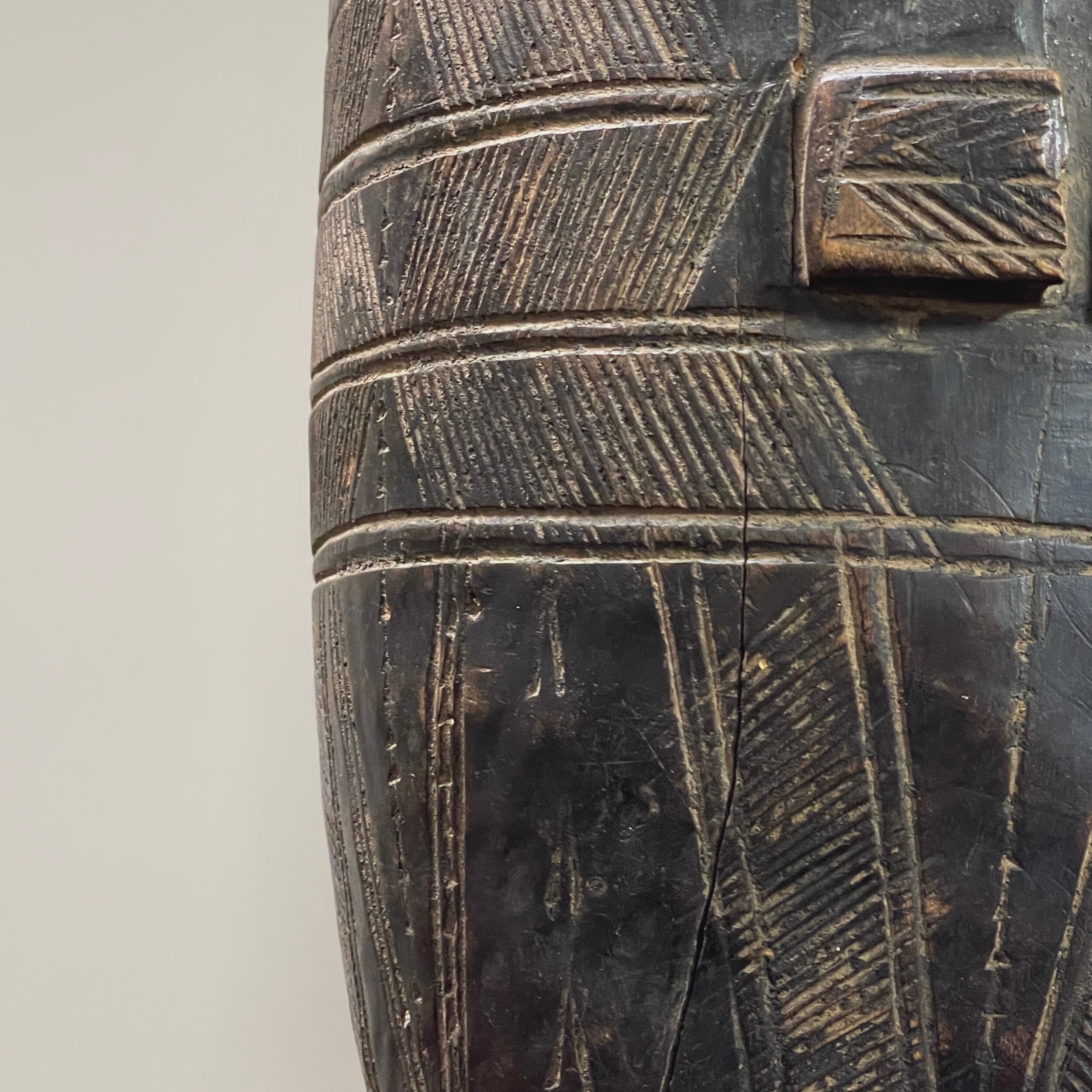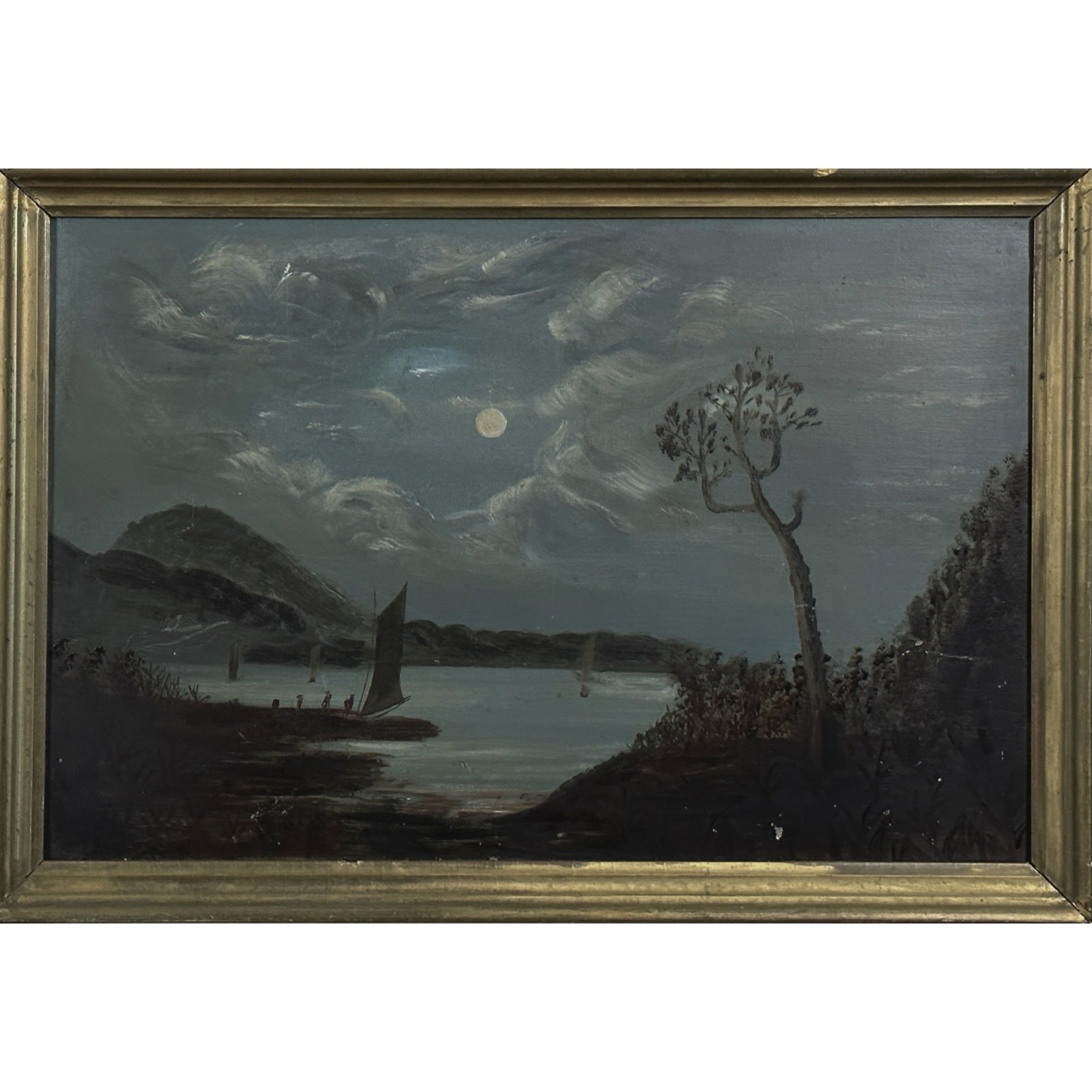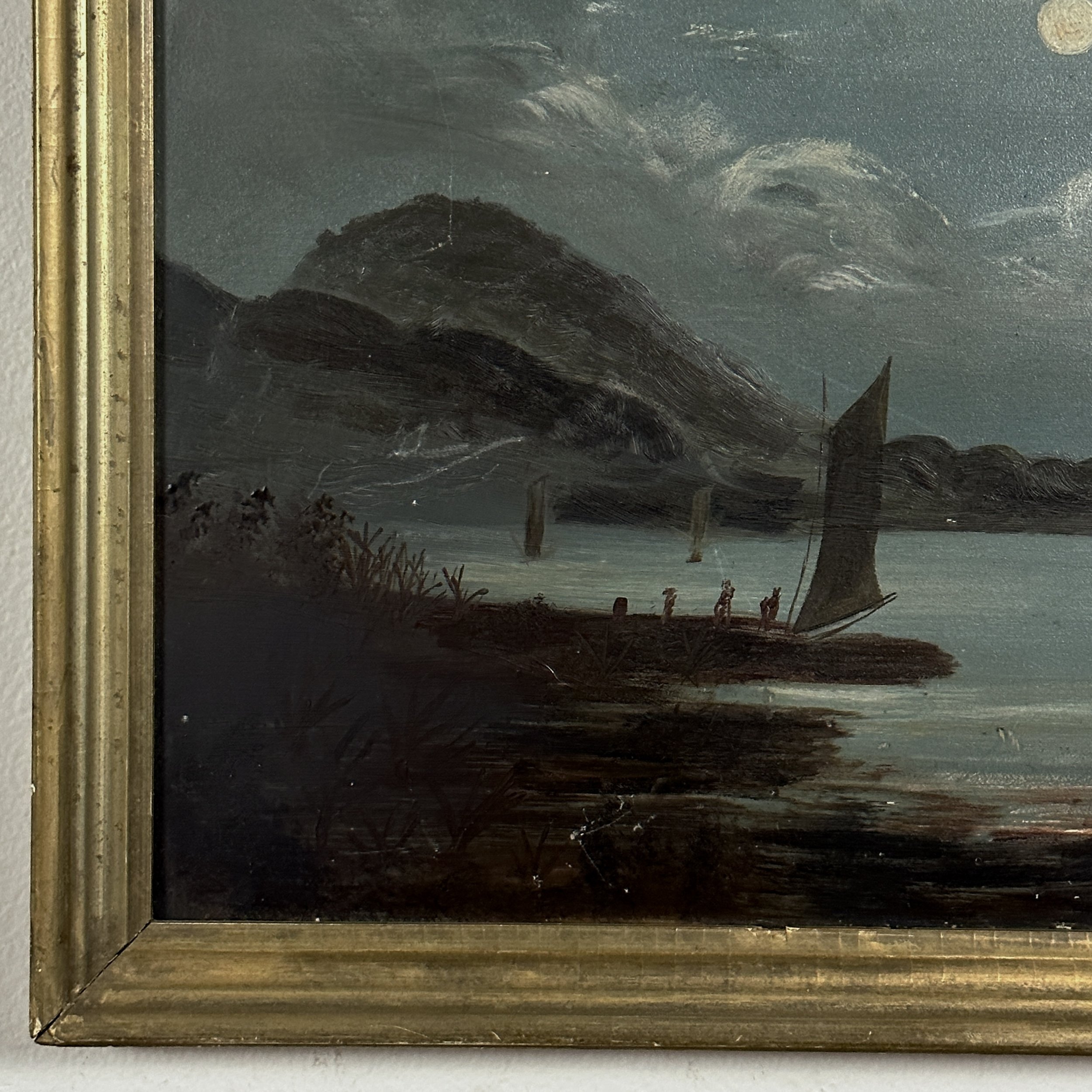Antique Kuba Hand Carved/Etched Wood Ceremonial Vessel
Antique Kuba Hand Carved/Etched Wood Ceremonial Vessel. Footed wood vessel with etched design along the exterior. Carved from a single piece of wood. In good condition with wear consistent with age. Please refer to pictures for details.
Size: 14 x 10 x 10 in
Numbering about 250,000 the Kuba live in the area of central DRC bordered by the Sankuru, Kasai, and Lulua rivers. This is a region of valleys where numerous rivers flow south to north; the hills are covered with brush and the rivers are bordered by forests. Farming, aside from clearing the fields, was women’s work; they cultivate manioc, corn, gourds, bananas, pineapples, and palms. Tobacco was grown by the men. The hunt, a collective enterprise using nets, brought prestige and reinforced the social cohesion between the villagers. To fish the rivers required the participation of the entire village in order to build canoes. Although today most Kuba ethnic groups are organized into independent chiefdoms, they still recognize the authority of the Bushong king.
The Kuba love of form, knowledge of materials, skill in execution, and appreciation of quality are best seen in the number and variety of cups and goblets, mostly for drinking palm wine. There are reports – not confirmed – that these cups might have been used in the poison ordeal. Among the Kuba, as among other African tribes, death was never attributed to natural causes but to malevolent spirits or to witchcraft. The person suspected of using witchcraft was required to drink poison from such a cup. If he vomited up the drink, he was declared innocent. On the other hand, his death proclaimed his guilt and constituted his punishment.The Kuba smiths worked with copper, iron, and brass, making weapons and tools to be admired as well as used. In some cases, one metal was inlaid with another. The Kuba also give expression to their great artistic sense in utensils: boxes, weapons, tobacco pipes, drums, drinking horns, bells, well-known musical instrument sanza, and textiles with ingeniously designed pattern work. The luxury articles made for the court are characterized by elaborate execution and rhythmically balanced form; for it was at court that the finest artists gathered, and here that they had an opportunity to gain prestige and renown. A good carver had the rank of a senior official.
Antique Kuba Hand Carved/Etched Wood Ceremonial Vessel. Footed wood vessel with etched design along the exterior. Carved from a single piece of wood. In good condition with wear consistent with age. Please refer to pictures for details.
Size: 14 x 10 x 10 in
Numbering about 250,000 the Kuba live in the area of central DRC bordered by the Sankuru, Kasai, and Lulua rivers. This is a region of valleys where numerous rivers flow south to north; the hills are covered with brush and the rivers are bordered by forests. Farming, aside from clearing the fields, was women’s work; they cultivate manioc, corn, gourds, bananas, pineapples, and palms. Tobacco was grown by the men. The hunt, a collective enterprise using nets, brought prestige and reinforced the social cohesion between the villagers. To fish the rivers required the participation of the entire village in order to build canoes. Although today most Kuba ethnic groups are organized into independent chiefdoms, they still recognize the authority of the Bushong king.
The Kuba love of form, knowledge of materials, skill in execution, and appreciation of quality are best seen in the number and variety of cups and goblets, mostly for drinking palm wine. There are reports – not confirmed – that these cups might have been used in the poison ordeal. Among the Kuba, as among other African tribes, death was never attributed to natural causes but to malevolent spirits or to witchcraft. The person suspected of using witchcraft was required to drink poison from such a cup. If he vomited up the drink, he was declared innocent. On the other hand, his death proclaimed his guilt and constituted his punishment.The Kuba smiths worked with copper, iron, and brass, making weapons and tools to be admired as well as used. In some cases, one metal was inlaid with another. The Kuba also give expression to their great artistic sense in utensils: boxes, weapons, tobacco pipes, drums, drinking horns, bells, well-known musical instrument sanza, and textiles with ingeniously designed pattern work. The luxury articles made for the court are characterized by elaborate execution and rhythmically balanced form; for it was at court that the finest artists gathered, and here that they had an opportunity to gain prestige and renown. A good carver had the rank of a senior official.
Antique Kuba Hand Carved/Etched Wood Ceremonial Vessel. Footed wood vessel with etched design along the exterior. Carved from a single piece of wood. In good condition with wear consistent with age. Please refer to pictures for details.
Size: 14 x 10 x 10 in
Numbering about 250,000 the Kuba live in the area of central DRC bordered by the Sankuru, Kasai, and Lulua rivers. This is a region of valleys where numerous rivers flow south to north; the hills are covered with brush and the rivers are bordered by forests. Farming, aside from clearing the fields, was women’s work; they cultivate manioc, corn, gourds, bananas, pineapples, and palms. Tobacco was grown by the men. The hunt, a collective enterprise using nets, brought prestige and reinforced the social cohesion between the villagers. To fish the rivers required the participation of the entire village in order to build canoes. Although today most Kuba ethnic groups are organized into independent chiefdoms, they still recognize the authority of the Bushong king.
The Kuba love of form, knowledge of materials, skill in execution, and appreciation of quality are best seen in the number and variety of cups and goblets, mostly for drinking palm wine. There are reports – not confirmed – that these cups might have been used in the poison ordeal. Among the Kuba, as among other African tribes, death was never attributed to natural causes but to malevolent spirits or to witchcraft. The person suspected of using witchcraft was required to drink poison from such a cup. If he vomited up the drink, he was declared innocent. On the other hand, his death proclaimed his guilt and constituted his punishment.The Kuba smiths worked with copper, iron, and brass, making weapons and tools to be admired as well as used. In some cases, one metal was inlaid with another. The Kuba also give expression to their great artistic sense in utensils: boxes, weapons, tobacco pipes, drums, drinking horns, bells, well-known musical instrument sanza, and textiles with ingeniously designed pattern work. The luxury articles made for the court are characterized by elaborate execution and rhythmically balanced form; for it was at court that the finest artists gathered, and here that they had an opportunity to gain prestige and renown. A good carver had the rank of a senior official.







































